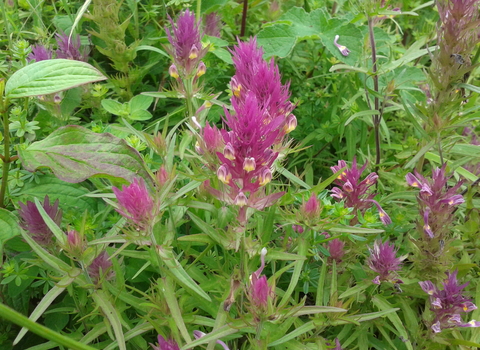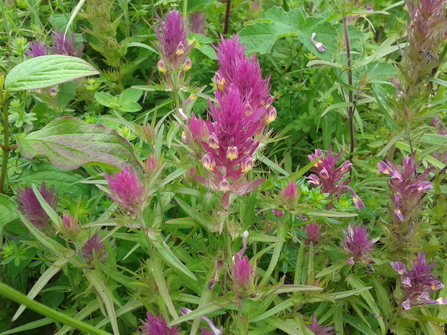
Field cow-wheat ©Steve Read
Field cow-wheat
Once widespread, this attractive plant has declined as a result of modern agricultural practices and is now only found in four sites in South East England.
Scientific name
Melampyrum arvenseWhen to see
Flowers May to SeptemberSpecies information
Category
Statistics
Height: up to 60cm highEndangered – Protected under Schedule 8 of the Wildlife & Countryside Act 1981.
Habitats
About
This rare and declining plant was once common on arable fields, where it was considered a weed, but has been decimated by modern agricultural practices. It can still be found in a few open grasslands, particularly on dry chalky soils.Field cow-wheat is a hemiparasite, meaning it gets some of its food from another species, as well as from photosynthesis. It can parasitise a wide range of host species but tends to favour grasses. The large seeds are poisonous.
How to identify
An herbaceous flowering plant, it has striking purple and yellow spiked clusters of flowers on branching stems. The leaves grow on opposite sides of the stem. They are lanceolate (long, pointed and wider in the middle, like the tip of a lance) and may be toothed.Distribution
Endangered, only found on 4 sites in South East EnglandDid you know?
Known locally as poverty weed, people were once paid to pull up the plant and carefully carry it off site to be burnt. Any seeds that were dropped had to be picked up and remove as well.
Field cow-wheat ©Steve Read
